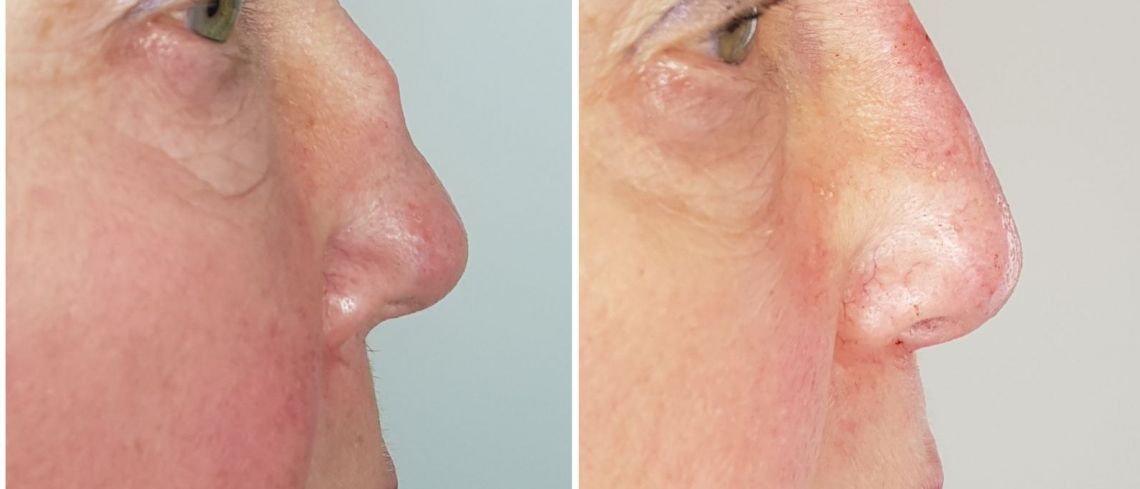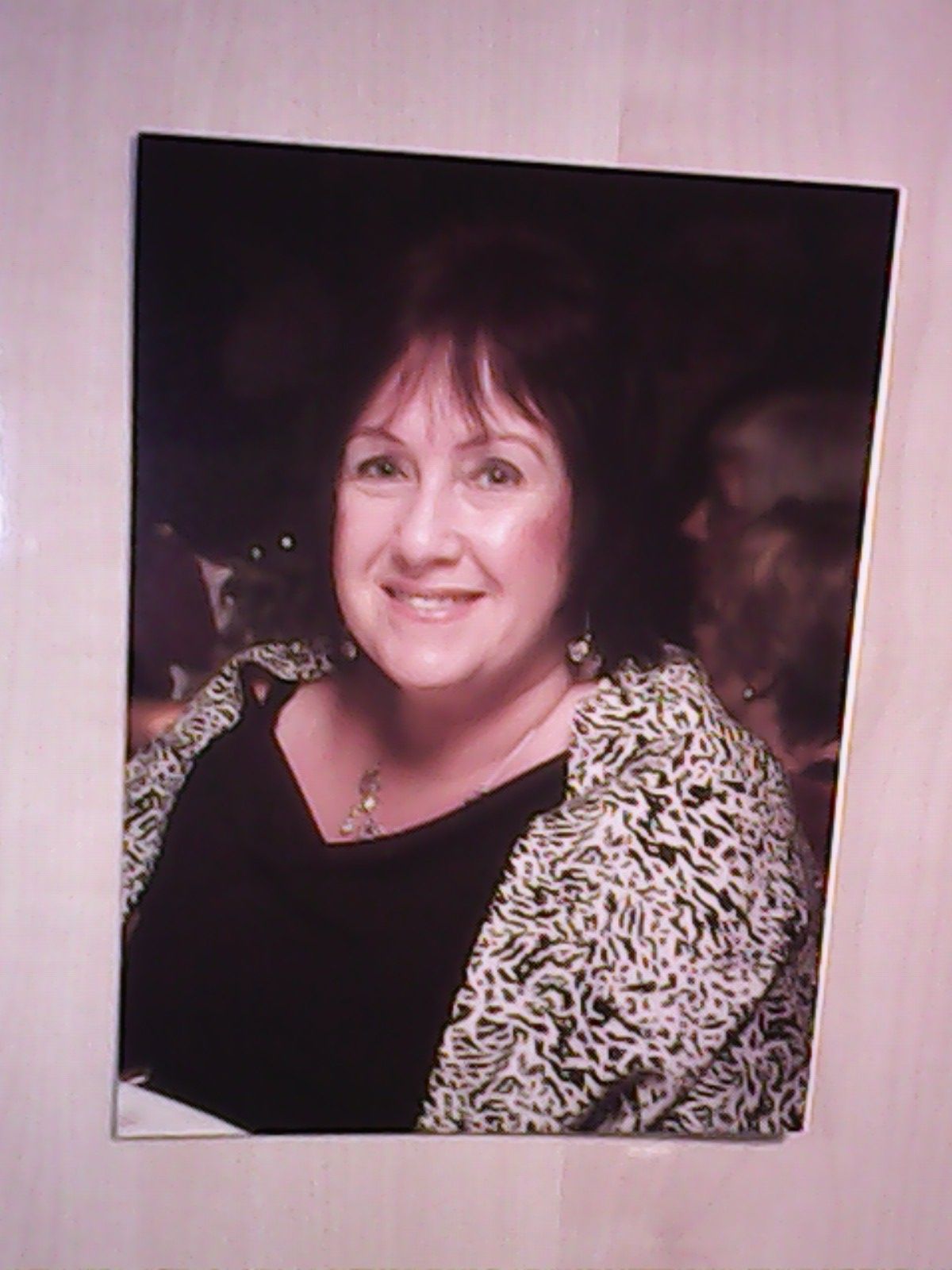
In the summer of 2009, 68-year-old Janet Nevinson, from Kendall in Cumbria, attended her GP surgery with what she, and her GP, thought was a bad case of sinusitis.
Janet, a married mother of one, was experiencing horrendous nose bleeds, and was prescribed sinus medication.
After two weeks of medication, her nose bleeds showed no sign of abating and she was sent for a series of tests. An MRI scan could find nothing wrong, but after blood tests and a biopsy of her nose, Janet was told she had a rare autoimmune condition, Wegener’s Granulomatosis. The condition affects fewer than 600 people in the UK.
Janet explains: 'My nosebleeds were horrendous. I also noticed that I had a black band across my nose that looked like a bruise. I constantly felt like I had something up my nose, and in addition to red blood, I would blow my nose and big, black lumps of dead looking material, like a dead slug, would come out. What I didn’t realise at the time was that the lumps were dead cartilage. The condition was attacking and killing the cartilage in my nose.'
Wegner’s Granulomatosis is a serious condition that can lead to tissue damage and organ failure, and can be fatal if left untreated. For Janet, though her symptoms began in her nose, it soon became clear it was affecting other areas of her body. Janet’s persistent nose bleeds had meant she hadn’t realised that the blood she tasted in her mouth, wasn’t solely from her nose – in fact, it was a sign of kidney failure, for which Janet was also treated.
However, it wasn’t just her kidneys which were affected; while undergoing a quadruple heart bypass, her surgeon found the condition had withered two arteries in her heart. Additionally, Janet experienced night sweats, coughing, extreme fatigue, weakness, weight loss and hearing loss.
She has undergone numerous treatments and assessments for the condition, including blood tests, MRI scans, X-rays, chemotherapy on several occasions, Rituximab (which she now has to have every six months) and has taken a significant number of steroids. Janet has taken so many steroids that she developed cataracts which have since been removed.
Wegner’s Granulomatosis has taken a significant toll on Janet’s nose, which collapsed in 2009, as she explains.
'At the beginning, when I learnt I had this condition, my appearance, understandably, wasn’t at the front of my mind. I was concentrating on surviving. In time, after my diagnosis, things became more manageable, but I have had two relapses since 2009; one in May 2013 and another in January 2015. Both relapses started with an infection in my eye; my antibodies were actually attacking my iris, but a lot of steroids, chemotherapy and Rutuximab have meant that now I am officially in remission. My ANCA levels (which are the antibodies are detected in a number of autoimmune disorders including Wegner’s Granulomatosis) are now normal.
'I’ve had a lot of steroid treatment which led to the destruction of my nose. Its collapse is most noticeable when looking at my profile. Looking in the mirror is worst – it’s a constant, visible reminder of my condition, and your face is always on display. You can’t cover it up. I’ve tried not to complain as I am lucky to be alive, but I have been very conscious of my nose. So much so that when out with friends I get my husband to sit to my side and our friends opposite so that it isn’t too apparent. I’m also conscious that people notice my nose more when I’m driving; when people come along beside the car they can see me in profile. So I asked my consultant, and GP about surgery to correct my nose, but both strongly advised against me undergoing more surgery because of my health status.
'One morning in March, I switched on the TV. I don’t normally watch morning TV, but was gripped by an item on This Morning; they were showing a live non-surgical nose job. I watched with mounting interest, and excitedly watched it again with my ever supportive husband that evening on catch up. It appeared that the treatment Dr Ayad Harb was demonstrating might be able to help me.'
.jpg)
Dr Ayad Harb of Qosmetics explains more 'One of the manifestations of this complex condition is a characteristic "saddle nose" deformity resulting from destruction of the underlying cartilage and collapse of the supporting structures of the nose.
'The saddle-nose shape can be a very visible reminder to the patient of the devastating effects of their condition. Treatment of this characteristic nose shape, however, can be extremely challenging and because of the patient’s general health and the high risks of anaesthetic or surgery, surgical rhinoplasty is often not an option.'
Janet contacted Dr Ayad Harb after the show and arranged to travel some considerable distance to be treated at his clinic in Bicester, Oxfordshire, as he explains: 'Janet had to travel for over three hours to get my clinic. She was understandably very distressed by the shape of her nose and felt that the journey was worth it to see if I could help her. After careful examination, discussion and explanation of the limitations and risks of the procedure, we went ahead with her a three-point rhino treatment, which is the least invasive and least traumatic method of non-surgical nose correction.'
The treatment of Wegener’s nose is very different from a typical nonsurgical rhinoplasty. The greatest challenge is the amount of correction which is required, essentially rebuilding an entire nasal bridge and restoring projection of a nose that has completely collapsed. For this purpose, one requires a very robust and stable hyaluronic acid filler such as Perfectha which will be able to support the tissues sufficiently well. I always choose hyaluronic acid filler, especially in cases on Wegener’s granulomatosis, where the risks of complications are higher.

'Janet's nose had collapsed and there was very little cartilage framework under the skin. I used my thee-point rhino principles to restore volume to her collapsed bridge and add definition and shape to the tip of her nose. The treatment took around 30 minutes and produced an immediate and transformative result. A typical non-surgical nose correction requires 0.7-1.5ml of filler. In Janet’s case, we used 4ml of Perfectha dermal filler. The main limitation to adding any more filler was the skin of her nose. One must always take care not to place the skin under excessive tension, thereby running the risk of necrosis (premature cell damage) or long term skin changes.'
Janet was delighted with the result – 'When Dr Harb treated me, my husband came into the treatment room and saw the results of the treatment before I did, and commented immediately on how straight my nose was. It might sound silly, but I now feel 100% more confident and not conscious of my nose anymore. I used to wear glasses, all the time, low down on my face to mask my nose, now I’m only wearing them to read! Before, when I looked in the mirror, I was always reminded of what the condition had done to destroy my body, but now I just see a normal nose. I feel so better about myself in general.'
Dr Harb continues: 'Both Janet and I are delighted with the outcome of her treatment. Her results should last 9-12 months and as the skin will have softened within a few months, her subsequent treatments and results will be even more beautiful.'
Related Treatment

Non-Surgical Rhinoplasty
Non-surgical rhinoplasty can be used to balance a ...
